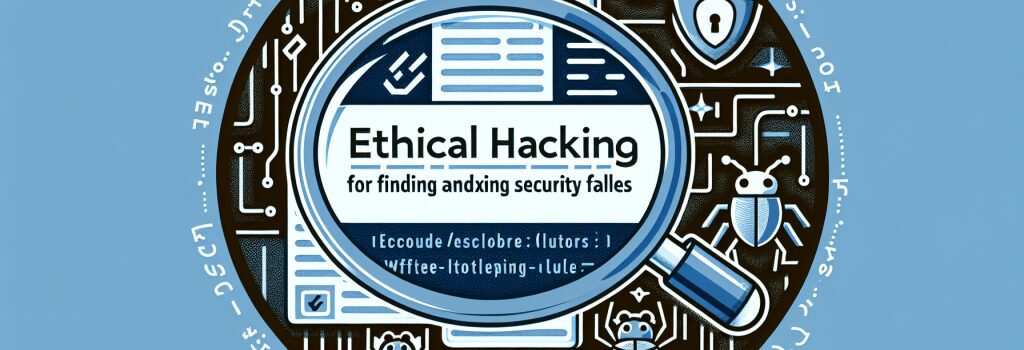Ethical Hacking for Web Developers: Finding and Fixing Security Flaws

Introduction to Ethical Hacking
Remember the movie, ‘War Games,’ where a young Matthew Broderick almost starts World War III by hacking a supercomputer? If you haven’t seen it, add it to your movie list ASAP. Ethical hacking might not come with the risk of starting a global conflict, but it sure adds an exciting edge to your everyday web development role! Jokes apart, ethical hacking or white-hat hacking is an essential skill that every web developer needs to possess.
The domain of web development is not just about creating visually appealing and responsive sites. It’s also about ensuring these digital assets are safe and secure from the relentless attacks by cybergoons, also known as hackers. That’s right! Your role as a web developer includes playing the part of a cyber superhero, securing your sites from these online villains.
What is Ethical Hacking?
If you’re thinking ethical hacking involves wearing a neon green hoodie, sitting in a dark room, typing away rapidly on a luminescent keyboard, let me stop you right there! Although Hollywood might’ve painted that picture, ethical hacking is far from it.
Ethical hacking refers to the proactive identification and fixing of vulnerabilities in a website or digital platform. As an ethical hacker, your job is much like a secret agent. You try to break into the system you’ve developed, not to cause harm, but to highlight potential weak points that others might exploit.
Why Ethical Hacking?
Cue the spy music because it’s your mission to protect the web world! In all seriousness, cyber-attacks are a significant issue. Incorporating ethical hacking techniques into the development process allows us to expose and address such security vulnerabilities early on – before the hackers do.
By understanding hacking methods, web developers can both ‘fight fire with fire’ and improve the security of their creations. It allows them to anticipate the moves of potential attackers and build robust security measures into their sites, making the cyber world a safer place – one website at a time.
Ethical Hacking Techniques
Reconnaissance
Just like in spy movies, the first step involves gathering information about the system or network you’re about to protect. This includes understanding the entire terrain of the site, kind of like inspecting the field before a big battle.
Scanning
Next, you scan the website for potential vulnerabilities by using manual or automated tools. Imagine you’re looking for a secret door in a castle, it’s kind of like that but here you’re looking for errors in your code, misconfigurations, and security holes.
Exploiting
Then comes the real kick – exploiting the vulnerability! But remember, you’re a ‘good hacker,’ so no mischief here. You’re only testing to confirm if what you found could be a real issue.
Reporting
Finally, you document your findings and prepare a report detailing the vulnerabilities discovered, the data exposed, and suggestions for mitigating these risks.
Conclusion
You didn’t think being a web developer would be this thrilling, did you? That’s right; web development is not just about scripting, designing, and coding. It also involves warding off cyber threats and ensuring your masterpiece websites are strong and secure fortresses. Now that you have a basic understanding of what ethical hacking is, get ready to dive into this fascinating world and use your skills to protect your web creations!


